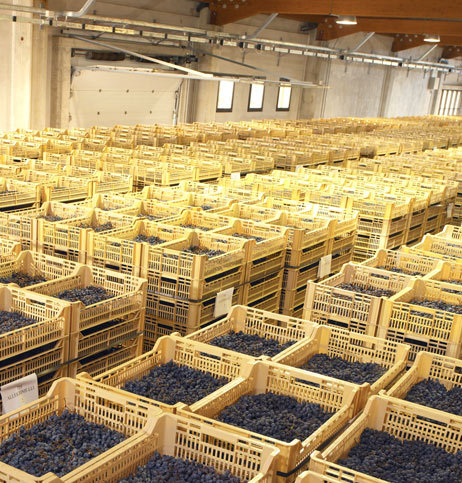Before you assume I am writing about sultana’s or raisins, don’t worry I’m not, well not exactly anyway.
You may wonder what dried grapes have got to do specifically with wine? Well, here’s an easy starter question for 10, what do the following wines have in common: Amarone, Recioto, Vin Santo, Passito di Pantelleria? Yes, you guessed it, these are all wines that are made from dried-grapes.
Now I am not going to talk about Noble Rot (Botrytis) in this article, as although this process of Botrytis does involve grapes shrivelling on the vine and dehydrating (ie drying) it is not the true definition of a dried-grape wine.
History
For that we have to look back many centuries to the time of the ancient Greeks when bunches would be deliberately twisted on the vine to starve the fruit of sap, leaving them to shrivel and dehydrate. Why was this done? Well in short, there were no way to stabilize and conserve wines back in the day, and this process resulted in much sweeter, stronger wines which were therefore more stable as they were less prone to spoilage organisms.
It’s also no surprise that it was the Greeks and Romans who invented/first used such practices, the climate was hot (it certainly could never have been done in England!) and grapes ripened and shrivelled easily. Such was the prevalence of, and predilection for these wines that they were regularly written about at the time – Homer and Pliny among many enthusiastic fans.
It is probably also no surprise that dried grape wines continue to this day to be popular in Italy (particularly in the Veneto), although to a much lesser extent in Greece (Santorini), other countries have dabbled, for example Australia, with some producers using a cut cane method to accentuate berry shrivelling.
Winemaking today

Don’t panic, this won’t be technical I promise. Essentially grapes (both red and white can be used) are picked either just before, at, or after full ripeness, then laid out to dry. Some wineries follow the ancient practices of laying out the picked bunches on straw on the ground, to raisin in the sun for a period of time (for some grape varieties, up to three months), but issues with (among other things) rats and mice, has meant that today most winemakers will collect the grapes into trays and store them in warm winery lofts, ensuring they remain loose and aerated to prevent rot, before being fermented.
Methods of vinification will vary depending on the wine being produced (ie sweet like a Recioto or dry like an Amarone) and stylistically will vary from fresh and fruity (Recioto di Soave) or oxidative with rancio characteristics (ie Vin Santo). I could write loads more here as production methods are hugely varied, but I don’t want to outstay my welcome with this piece.
Terms you might see:
Appassimento – Italian term for the drying of the grapes for weeks or months to concentrate sugar and flavour (as referenced above).
Passito – Italian term used to describe wines made from dried grapes
Ripasso – essentially taking a fermented wine and refermenting with the unpressed grape skins from the production of Amarone, to provide additional concentration of flavour and alcohol.

Some examples of dried-grape wines to look for:
Vin Santo (Sweet) –you can find examples from Italy (Tuscany) as well as Santorini. Rancio style, by which I mean, oxidative with notes of caramel, walnuts, fruit cake. Utterly delicious actually.
Amarone (Dry)– high alcohol, deeply flavoured with notes of bitter chocolate, prune, mocha and sweet spice often evident. Love these wines!
Recioto della Valpolicella (Sweet) – essentially the sweet version of Amarone usually with more primary fruit alongside dried fruits and an unmistakable chocolatey richness.
Top tip! If you like Amarone but find it can be too expensive, then I recommend Valpolicella Ripasso, I like to call this “Baby Amarone”, the flavours can be similar, lots of rich, sweet fruit and chocolate notes but for a fraction of the price although beware quality can vary.
That wraps up dried-grapes for today, tomorrow E is for Entre-Deux-Mers.
